6 Chapter 8: Comparative Politics
Comparative politics centers its inquiry into politics around a method, not a particular object of study. This makes it unique since all the other subfields are orientated around a subject or focus of study. The comparative method is one of four main methodological approaches in the sciences (the others being statistical method, experimental method, and case study method). The method involves analyzing the relationship between variables that are different or similar to one another. Comparative politics commonly uses this comparative method on two or more countries and evaluating a specific variable across these countries, such as a political structure, institution, behavior, or policy. For example, you may be interested in what form of representative democracy best brings about consensus in government. You may compare majoritarian and proportional representation systems, such as the United States and Sweden, and evaluate the degree to which consensus develops in these governments. Conversely, you may take two proportional systems, such as Sweden and the United Kingdom, and evaluate whether there is any difference in consensus-building among similar forms of representative government. Although comparative politics often makes comparisons across countries, it can also conduct comparative analysis within one country, looking at different governments or political phenomena through time.
The comparative method is important to political science because the other main scientific methodologies are more difficult to employ. Experiments are very difficult to conduct in political science—there simply is not the level of recurrence and exactitude in politics as there is in the natural world. The statistical method is used more often in political science but requires mathematical manipulation of quantitative data over a large number of cases. The higher the number of cases (the letter N is used to denote number of cases), the stronger your inferences from the data. For a smaller number of cases, like countries, of which there is a limited number, the comparative method may be superior to statistical methodology. In short, the comparative method is useful to the study of politics in smaller cases that require comparative analysis between variables.
Let’s return to the basic elements of social science inquiry that we covered in Chapter One. Research in political science is typically focused on causation—what x causes y—and thus involves independent and dependent variables. An independent variable (IV) is a causal agent that provokes some change and brings about a particular outcome. The outcome, or consequence, of the causal mechanism is the dependent variable (DV).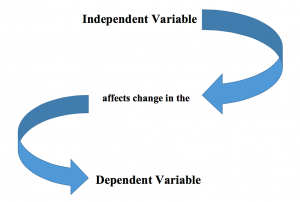 It is best to start research in political science with a question. Why do we see x and not y? Why do we have two very similar political systems producing different outcomes? Or why do two very different political systems produce the same outcome? Designing a research question is not as easy as it may initially appear. It requires the careful construction of a question—really good research questions do not typically appear to us like manna from the heavens. When we observe some kind of political phenomena, we might ask, “what caused this phenomena to occur?” This is a good starting point, and is akin to the process of detective work. Indeed, social scientists are a bit like detectives trying to solve a crime—they seek to explain various political, economic, and social “mysteries” in our world. Explaining the mystery in this sense is identifying the causes of a particular phenomena we observe. The dependent variable is the object or focus of your study—this is the outcome you seek to explain. Typicaly social science inquiry requires multiple independent variables—potential causes of the change you observe—in order to analyze and compare each of these IVs to find the best possible answer or causal agent. Now let’s review two common strategies in the comparative method—most similar systems design (MSSD) and most different systems design (MDSD).
It is best to start research in political science with a question. Why do we see x and not y? Why do we have two very similar political systems producing different outcomes? Or why do two very different political systems produce the same outcome? Designing a research question is not as easy as it may initially appear. It requires the careful construction of a question—really good research questions do not typically appear to us like manna from the heavens. When we observe some kind of political phenomena, we might ask, “what caused this phenomena to occur?” This is a good starting point, and is akin to the process of detective work. Indeed, social scientists are a bit like detectives trying to solve a crime—they seek to explain various political, economic, and social “mysteries” in our world. Explaining the mystery in this sense is identifying the causes of a particular phenomena we observe. The dependent variable is the object or focus of your study—this is the outcome you seek to explain. Typicaly social science inquiry requires multiple independent variables—potential causes of the change you observe—in order to analyze and compare each of these IVs to find the best possible answer or causal agent. Now let’s review two common strategies in the comparative method—most similar systems design (MSSD) and most different systems design (MDSD).
Most Similar Systems Design (MSSD)
This strategy is predicated on comparing very similar cases which differ in their dependent variable. In other words, two systems or processes are producing very different outcomes—why? The assumption here is that comparing similar cases that bring about different outcomes will make it easier for the researcher to control factors that are not the causal agent and isolate the independent variable that explains the presence or absence of the dependent variable. A benefit of this strategy is that it keeps confusing or irrelevant variables out of the mix by identifying two similar cases at the outset. Two similar cases implied a number of control variables—elements that make the cases similar—and very few elements that are dissimilar. Among those dissimilar elements is likely your independent variable that produced the presence/absence of your dependent variable. A downside to this approach is that when comparing across countries, it can be difficult to find similar cases due to a limited number of them. There can be a more strict or loose application of the MSSD model—similarities may be fairly exact or roughly the same, depending on the characteristic involved, and will influence your research project accordingly.
Example 8.1
Suppose you want to study how well forms of representative government develop consensus and agreement over policy matters. You may observe that nearly identical representative systems of government exist in County A and Country B, but are producing very different results.
- Country A has a proportional representation system and has a long and successful track record of producing consensus among lawmakers over a number of policy issues.
- Country B, however, is riddled with partisan disagreement and a lack of consensus over a similar kind and number of policy issues.
In this instance, you may also observe a number of similarities that act as control variables in your research—both countries have a bicameral legislature, a similar number of representatives per capita. This is a research project well suited to the MSSD approach, as it allows multiple control points (proportional representation, bicameral legislature, number of representatives, etc.) and allows for the researcher to focus on fine grain points of difference among the cases. You may observe in this example one intriguing difference in demographics—County A’s population is smaller and largely homogenous, whereas Country B’s population is larger and more diverse. It may be that in Country B this diverse population is well represented in the legislature but leads to more policy disputes and a relative lack of consensus when compared to Country A.
Most Different Systems Design (MDSD)
This strategy is predicated on comparing very different cases that are all have the same dependent variable. This strategy allows the research to identify a point of similarity between otherwise different cases and thus identify the independent variable that is causing the outcome. In other words, the cases we observe may have very different variables between them yet we can identify the same outcome happening—why do we have different systems producing the same outcome? The task is to then sift through the variables existing between the cases and isolate those that are in fact similar, since a similar variable between the cases may in fact be the causal agent that is producing the same outcome. An advantage to the MDSD approach is that it doesn’t have as many variables that need to be analyzed as the MSSD approach does—a researcher only needs to identify the same variable that exists across all different cases. The MSSD approach, on the other hand, tends to have a lot more variables that have to be considered although it may provide a more precise link between the independent and dependent variables.
Example 8.2
Let’s use an example that will help illustrate the MDSD approach. Suppose you observe two very different forms of representative government producing the same outcome: Country A has a majoritarian, winner-take-all representational system and Country B has a proportional representation system, yet in both countries there is a high degree of efficiency and consensus in the legislative process.
Why do two systems have the same outcome?
You may list a number of variables and compare them across the two cases, sifting through to locate similar variables. Unlike the MSSD approach, which seeks to locate different variables across similar cases, the MDSD approach is the opposite—the task is to locate similar variables across different cases. You may observe that despite the fact that these two countries have very different systems of representation, both have unicameral legislatures and a low number of representatives per capita. These factors may produce higher levels of efficiency and consensus in the legislative process, thus explaining the same dependent variable despite different cases.
The Nation-State
Much of comparative politics focuses on comparisons across countries, so it is necessary to examine the basic unit of comparative politics research—the nation-state.
A nation is a group of people bound together by a similar culture, language, and common descent, whereas a state is a political sovereign entity with geographic boundaries and a system of government. A nation-state, in an ideal sense, is when the boundaries of a national community are the same as the boundaries of a political entity. In this sense, we may say that a nation-state is a country in which the majority of its citizens share the same culture and reflect this shared identity in a sovereign political entity located somewhere in the world. Nation-states are therefore countries with a predominant ethnic group that articulates a culturally and politically shared identity. As should be apparent, this definition has some gray areas—culture is fluid and changes over time; migration patterns can change the make up of a nation-state and thus influence cultural and political changes; minority populations may substantially contribute to the characteristics that make up a shared national identity, and so on.
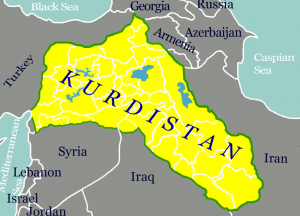
Nations may include a diaspora or population of people that live outside the nation-state. Some nations do not have states. The Kurdish nation is an example of a distinct ethnic group that lacks a state—the Kurds live in a region that straddles the borders of Turkey, Iraq, Syria, and Iran. Some other examples of nations without states include the numerous indigenous nations of the Americas, the Catalan and Basque nations in Spain, the Palestinian people in the Middle East, the Tibetan and Uyghur people in China, the Yoruba people of West Africa, and the Assamese people in India. Some previously stateless nations have since attained statehood—the former Yugoslav republics, East Timor, and South Sudan are somewhat recent examples. Not all stateless nations seek their own state, but many if not most have some kind of movement for greater autonomy if not independence. Some autonomous of breakaway regions are nations that have by force exercised autonomy from another country that claims that region. There are many such regions in the former Soviet Union: Abkhazia and South Ossetia (breakaway regions from Georgia), Transdniestria (breakaway region from Moldovia), Nagorno-Karabagh (breakaway region from Azerbaijan), and the recent self-declared autonomous provinces of Luhansk and Donetsk in the Ukraine. Most of these movements for autonomy are actively supported by Russia in an effort to control their sphere of influence. Abkhazians, South Ossetians, Trandniestrians, and residents of Luhansk and Donetsk can apply for Russian passports.
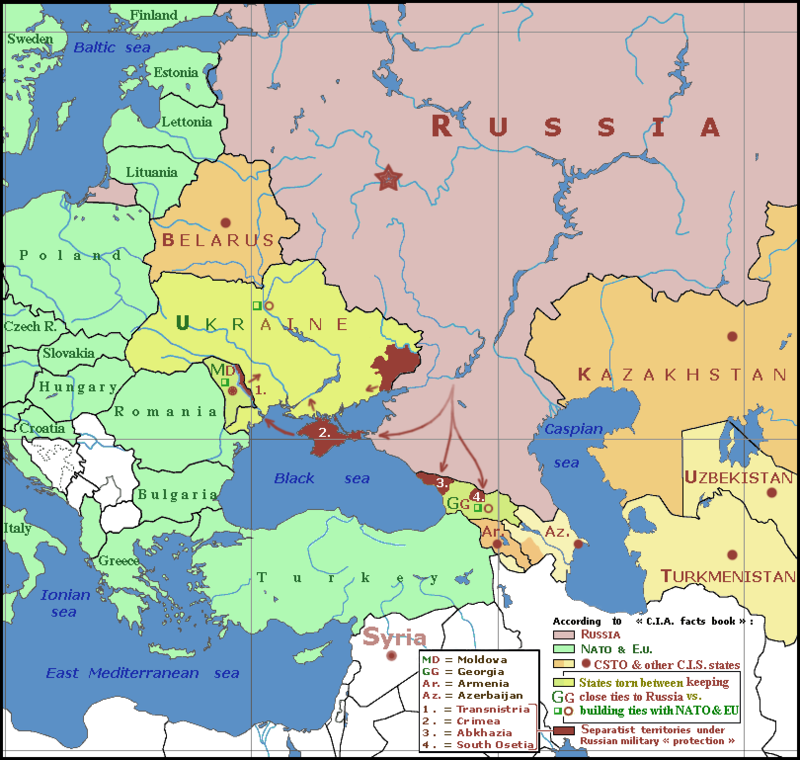
Lastly, some countries are not nation-states either because they do not possess a predominate ethnic majority or have structured a political system of more devolved power for semi-autonomous or autonomous regions. Belgium, for example, is a federal constitutional monarchy with a parliamentary system with three highly autonomous regions: Flanders, Wallonia, and the Brussels capital region. The European Union is an interesting case of a supra-national political union of 28 states with a standardized system of laws and an internal single economic market. An outgrowth of economic agreements among Western European countries in the 1950s, the EU is today one of the largest single markets in the world and accounts for roughly a quarter of the global economic output. In addition to a parliament, the EU government, located in Brussels, Belgium, has a commission to execute laws, a courts system, and two councils, one for national ministers of the member states and the other for heads of state or government of the member states. The EU’s complicated political system allows for varying and overlapping levels of legal and political authority. Some member states have anti-EU movements in their countries that broadly share a concern over a loss of political and cultural autonomy in their country. The United Kingdom’s decision to leave the EU, known as “Brexit,” has been a complex and controversial process.
As this brief overview suggests, the concept of a nation-state is central to global politics. Crucial questions on what constitutes a nation-state underpin many of the most significant political conflicts in the world. Autonomous movements that seek greater sovereignty for a particular nation are found in every region of the world. At the heart of the relationship between nations and states is the idea of self-determination—that distinct cultural groups should be able to define their own political and economic destiny. Self-determination as a conception of justice suggests that freedom is not just individual but also communal—the freedom of defined groups to autonomy and self-direction.
The push and pull of power that brings nations together or tears them apart is everywhere in global politics. Moreover, states may appear stronger than they actually are, as the unexpected fall of the Soviet Union suggests. The legitimacy of the state and the cohesiveness of a nation go a long way toward understanding stability in the global world.
Comparing Constitutional Structures and Institutions
In Chapter Four we provided an overview of constitutions as a blueprints for political systems and in Chapter Three’s focus on political institutions we discussed legislative, executive, and judicial units and powers such as unicameral or bicameral legislatures, presidential systems, judicial review, and so on. The relationship between similar and different institutional forms make up the nuts and bolts of comparative political inquiry. In comparing constitutions across countries, each constitution speaks to the unique characteristics of a political community but there are also similarities. Constitutions typically outline the nature of political leadership, structure a form of political representation, provide for some form of executive authority, define a legal system for adjudicating law, and authorize and limit the reach of government power. On the other hand, there are several unique factors that determine a constitution an government. Geography, for example, often has a profound impact on the constitutional structure and form of government.
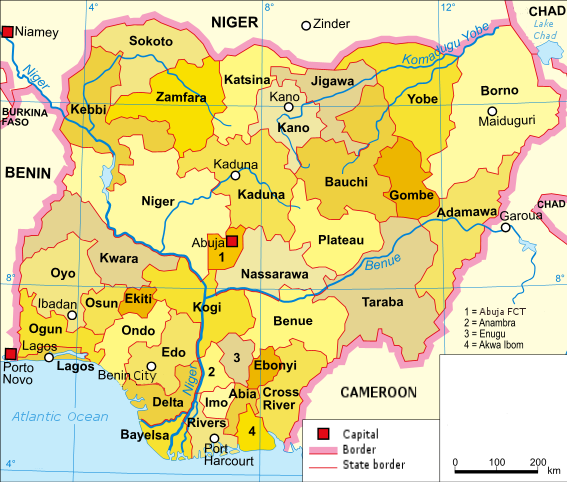
Large countries with scattered populations, for example, must be more sensitive to the legitimacy of the state in regions far removed from the center of government power. Some governments have moved their seat of power to more centralized and less populous cities in response to this concern—Abuja, Nigeria, Canberra, Australia, Dodoma, Tanzania, Yamoussoukro, Côte d’Ivoire, Brasilia, Brazil and Washington DC in the United States are examples of capital cities founded as a more central location in order to better balance power among competing regions.
Another factor is social stratification—differentiation in society based on wealth and status. What is typically regarded as lower, middle, and upper classes in most developed societies, social stratification can be complex, overlapping, and influenced by a variety of group characteristics such as race or ethnicity and gender. Social stratification can lead to political stratification—differing levels of access, representation, influence, and control of political power in government. This derived power can in turn reinforce social stratification in various ways. For example, the wealthy and privileged of a country may have derived political power from their wealth and in turn shape and influence government in such a way as to protect and increase their wealth, influence, and privilege. With the comparative method of political inquiry, political scientists can study the degrees to which social stratification effects political processes across countries. This kind of comparative inquiry can yield important insights such as whether wealth derived from group characteristics leads to greater political stratification than wealth derived across more diverse groups, or whether reforms directed at lessening political stratification have any effect on social stratification.
Lastly, global stratification suggests when looking at the global system, there is an unequal distribution of capital and resources such that countries with less powerful economies are dependent on countries with more powerful economies. Three broad classes define this global stratification: core countries, semi-peripheral countries, and peripheral countries. Core countries are highly industrialized and both control and benefit from the global economic market. Their relationship to peripheral countries is typically predicated on resource extraction—core countries may trade or may seek to outright control natural resources in the peripheral countries. Take as an example two open pit uranium mines located near Arlit in the African country of Niger. Niger, one of the poorest countries in the world, was a former colony of France. These mines were developed by French corporations, with substantial backing from the French government, in the early 1970s. French corporations continue to own, process, and transport uranium from the Arlit mines. The vast majority of the uranium needed for French nuclear power reactors and the French nuclear weapons program comes from Arlit. The mines have completely transformed Niger in a number of ways. 90% of the value of Niger’s exports come from uranium extraction and processing, leading to what some economists call a “resource curse”—a situation in which an economy is dominated by a single natural resource, hampering the diversification of the economy, industrialization, and the development of a highly skilled workforce.
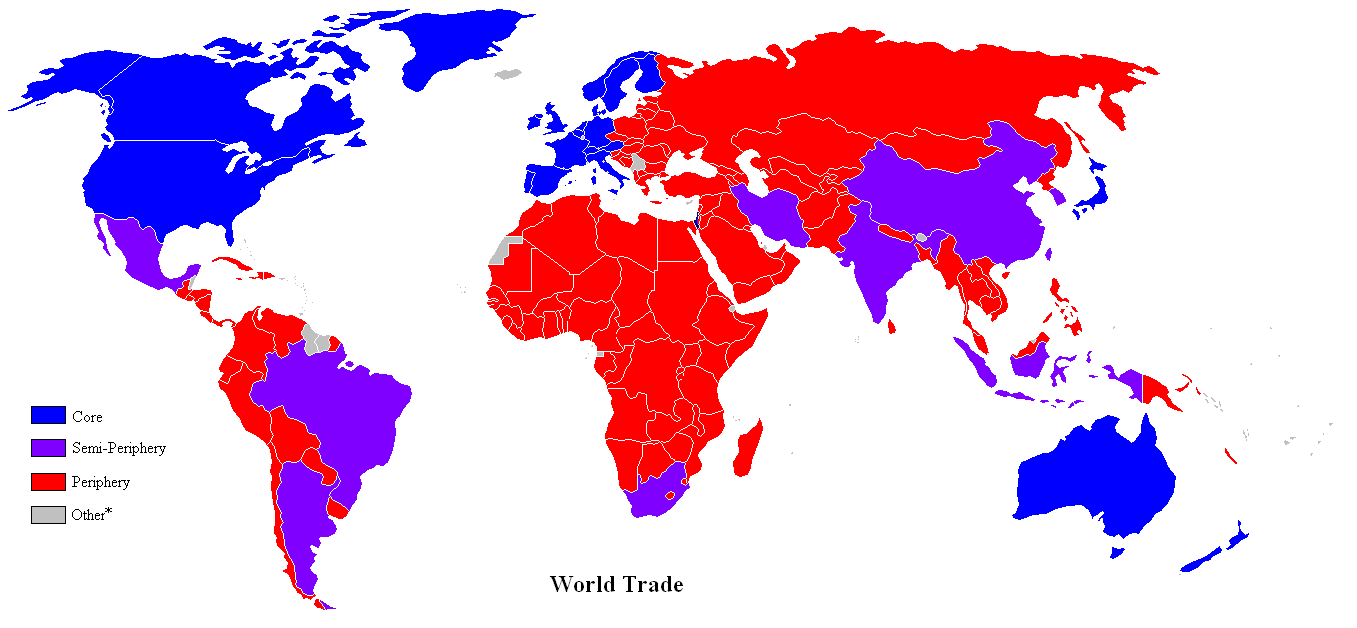
Semi-periphery countries have intermediate levels of industrialization and development with a particular focus on manufacturing and service industries. Core countries rely on semi-peripheral countries to provide low cost services, making the economies of core and semi-peripheral countries well integrated with one another, but also creating an economic situation in which semi-peripheral countries become increasingly dependent on consumption in core countries and the global economy generally, sometimes at the expense of more economic self-sufficient and sustainable development. As an example, let’s consider Malaysia, a newly industrialized Asian country of over 40 million people. Malaysia has had a GDP growth rate of over 5% for 50 years. Previously a resource extraction economy, Malaysia went through rapid industrialization and is currently a major manufacturing economy, and is one of the world’s largest exporters of semi-conductors, IT and communication equipment, and electrical devices. It is also the home country of the Karex corporation, the world’s biggest producer of condoms.
Included among core countries are the United States and Canada, Western Europe and the Nordic countries, Australia, Japan, and South Korea. Semi-peripheral countries include China, India, Russia, Iran, Malaysia, Indonesia, Mexico, Brazil, Argentina, and South Africa. Periphery countries include most of Africa, the Middle East, Central America, Eastern Europe, and several Asian countries. Reflect on the relationship between core, semi-peripheral, and peripheral countries. Do you think this relationship is predicated more on exploitation and control or mutually beneficial economic partnerships in a global environment? Choose three countries—one core, one semi-peripheral, and one peripheral—that have political and economic ties to one another. Evaluate and analyze relations between these countries. What are the prominent economic interactions? What best characterizes the diplomacy and political relations between these countries? Are the forms of government similar or different?
The Value of Languages and Comprehensive Knowledge
Comparative politics arguably requires more comprehensive knowledge of countries, political systems, cultures, and languages than the other sub-disciplines in political science. Language skill, in particular, is often essential for the comparativist to conduct good research. Having some facility with languages spoken in the countries or regions central to the research project gives researcher access to information and opens up avenues of communication and knowledge that is needed for in-depth understanding.
1. English (1.39b)
2. Mandarin Chinese (1.15b)
3. Spanish (661m)
4. Hindustani (544m)
5. Arabic (422m)
6. Malay (281m)
7. Russian (267m)
8. Bengali (261m)
9. Portugese (229m)
10. French (229m)
In conducting field research, knowledge of local languages is critically important. Conducting interviews and doing observations in the field require familiarity with common languages spoken in the area. Grants are available from the US State Department and academic institutions for graduate students (and in some cases promising undergraduates) for language programs. The best environment for learning a foreign language is immersive—ideally, students should spend time in areas they have research interests in to gain familiarity with the language(s) and cultural practices. For example, if one wanted to conduct a comparative research project on political development in Kosovo and Abkhazia—two breakaway autonomous republics of similar size and population that are key sites of the geopolitical struggle between the West and Russia—it would be necessary to have some familiarity with Albanian (the dominant language of Kosovo) and Abkhaz, but it may also be helpful to have some exposure to Serbian, Russian, and Georgian as well.
Comparativists should ideally have broad but deep knowledge of the world—understanding regional issues, environmental resources, demographics, and relations between countries provides a pool of general knowledge that can help comparativists avoid obstacles while conducting their research. For example, if one were conducting a study on the relationship between women’s access to contraceptives and the percent of women in the workforce with a data set of some 150 countries, it is useful to know that in the non-Magreb countries of Africa women make up a disproportionately large percentage of agricultural labor. Despite low access to contraceptives, sub-Saharan African countries have relatively high percentages of women in the work force due to the cross-cultural norm of women farmers.
Field Research in Comparative Politics
A crucial component of doing comparative politics is field research—the collection of data or information in the relevant areas of your research focus. Where political theory is akin to the discipline of philosophy, comparative politics is akin to anthropology in this field research component. Comparativists are encouraged to “leave the office” and bring their research out into the relevant areas in the world. Being on the ground affords the researcher a firsthand perspective and access to the sources that underpin good comparative analysis. Conducting surveys with local respondents, doing interviews with key actors in and out of government, and making participant observations are some common methods of gathering evidence for the field researcher. To continue with the above example of Kosovo and Abkhazia, suppose a researcher was interested in comparing constitutional development and reform in the two republics. Interviews with key actors in developing those respective constitutions would provide a firsthand account of the process, while surveys conducted with local responses could measure the degree of support for key reforms. A researcher could also conduct participant observations of the legislative process, media events, or council meetings.
Being in the field always comes with surprises that may alter the research project in numerous ways. Poor infrastructure may hamper travel. Corruption may create obstacles in survey work or interviews. Locals may be unwilling to work with a foreign researcher whose intentions are in doubt. It is always important to balance your ideal research project with the practical realities you find on the ground. Deciding whether to take a short or long trip abroad is also an important consideration—shorter trips may bring more focus and efficiency to your work and also afford more opportunity to identify points of comparison and contrast, whereas longer trips can be more open-ended and immersive, giving the researcher the opportunity to develop contacts and and have a more in-depth cultural experience. Lastly, case selection and sampling are important considerations—macro-level case selection involves identifying a country to conduct field work; meso-level selection involves locating relevant regions or towns; micro-level selection involves identifying individuals to interview or specific documents for content analysis.
Conclusion
Comparative politics is more about a method of political inquiry than a subject matter in politics. The comparative method seeks insight through the evaluation and analysis of two or more cases. There are two main strategies in the comparative method: most similar systems design, in which the cases are similar but the outcome (or dependent variable) is different, and most different systems design, in which the cases are different but the outcome is the same. Both strategies can yield valuable comparative insights. A key unit of comparison is the nation-state, which gives a researcher relatively cohesive cultural and political entities as the basis of comparison. A nation-state is the overlap of a definable cultural identity (a nation) with a political system that reflects and affirms characteristics of that identity (a state).
In comparing constitutions and political institutions across countries, it is important to analyze the factors that shape unique constitutional and institutional designs. Geography and basic demographics play a role, but also social stratification, or difference among individuals in terms of wealth or prestige. Social stratification is often reflected, and subsequently reinforced, in political stratification (differentiation in political power, access, and representation). Lastly, global stratification suggests an imbalance of power in the global world, in which core countries are able to control or influence economic and political processes in semi-periphery and periphery countries.
In the next chapter, we will consider a very different set of sub-disciplines—American politics and public policy and administration.
Media Attributions
- IV DV © Jay Steinmetz is licensed under a CC BY-SA (Attribution ShareAlike) license
- 1024px-Kurdistan_wkp_reg_en © Ferhates is licensed under a CC BY-SA (Attribution ShareAlike) license
- Geopolitics_South_Russia © Spiridon Ion Cepleanu is licensed under a CC BY-SA (Attribution ShareAlike) license
- Nigeria-karte-politisch_english is licensed under a CC BY-SA (Attribution ShareAlike) license
- World_trade_map © Lou Coban is licensed under a Public Domain license
- Sawe, Benjamin Elisha. "What is the Most Spoken Language in the World?" WorldAtlas, Jun. 7, 2019, worldatlas.com/articles/most-popular-languages-in-the-world.html (accessed on August 7, 2019).. ↵

